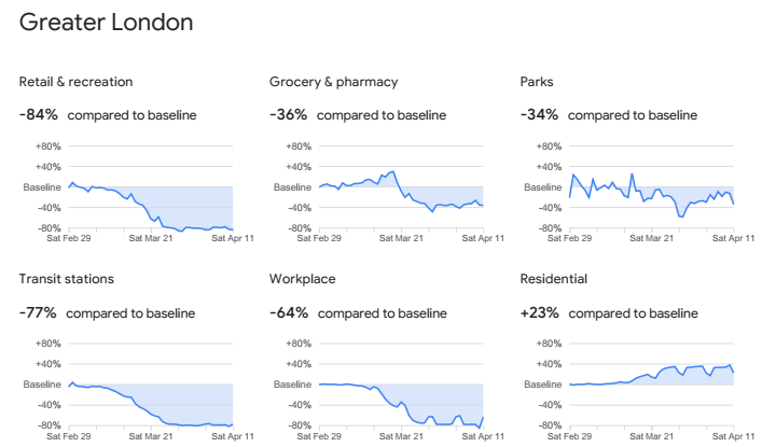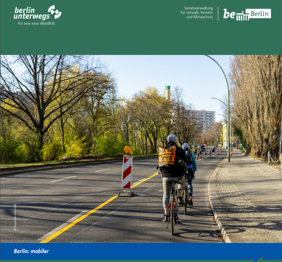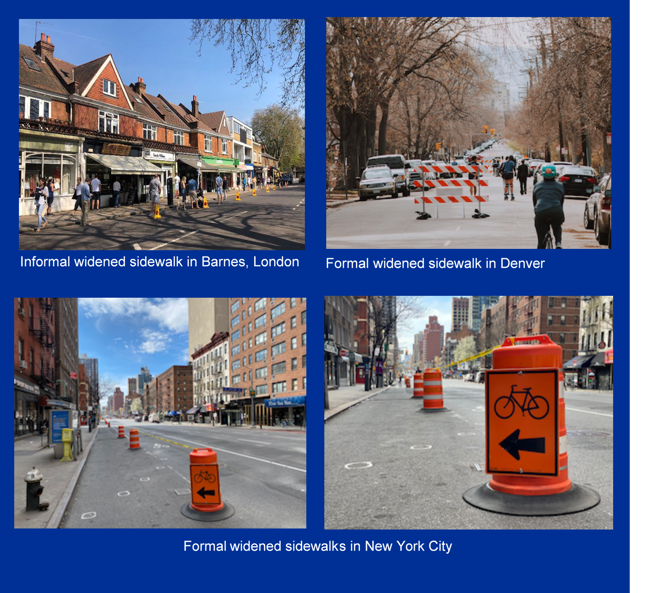
Mark Strong, Transport Initiatives and member of CIHT's Sustainable Transport Panel, considers a range of actions that could be taken to support front-line efforts to deal with the impact of COVID-19.
Join other savvy professionals just like you at CIHT. We are committed to fulfilling your professional development needs throughout your career
The emergency resulting from the COVID-19 pandemic is unprecedented in our lifetimes. Clearly everyone fully supports the heroic efforts of NHS medics and other emergency services who are putting their own lives on the line to save others. We also appreciate the efforts of other key workers especially in the public sector who are working to maintain crucial services.
Those of us working in transport - at local authorities, consultancies and the voluntary sector - should consider how we can use our professional expertise to support those in the front line, by helping to develop and implement ways of making it safe to travel by foot and cycle.
This is not a trivial issue – the British Medical Journal (BMJ)(1) has advised that cities should be looking to reduce speed limits and create space for walking and cycling. This would make it easier for people to observe social distancing in safety. In addition, research shows a link between worse air quality and the spread of COVID-19(2). Poor air quality has a more general impact on people with breathing issues which is a major part of COVID-19 infection, leading to hospitalisation and death.
The restriction on travel to essential trips has led to a major reduction in overall transport use but a noticeable increase in cycling. Making a daily walk or bike ride for exercise has also become a key part of people’s routine, helping maintain mental and physical health.
In particular, many health staff and key workers have realised the advantages of cycling to work. They are doing this to avoid the increased risk on public transport, where it’s difficult to maintain 2m social distancing. Service frequency has fallen to reduce costs. Reducing risk for public transport staff is also important, and sadly several bus drivers have died.
Mark Strong MCIHT MIHE MTPS, is a managing consultant at Transport Initiatives and member of CIHT's Sustainable Transport Panel.
The blog was written with help from:
Adam Tranter, Bicycle Mayor of Coventry, CEO Fusion Media.
Mark Philpotts, CEng MICE FCIHT FIHE PIEMA MTPS, City Infinity.
Phil Jones, CEng FCIHT FIHIE MICE MITE, PJA Ltd and member of CIHT's Urban Design Panel.

Source: www.google.com/covid19/mobility/
Data supplied by Google (see above) has shown a clear reduction in the level of movement for most trip purposes, while DfT data shows a drop in motor traffic. But even with non-essential traffic banned, people walking are put in danger when they have to step off pavements to give others space. Indeed, in many places there is no other way to keep 2m apart.
While traffic has dropped (with a clear improvement in local air quality) speeds have increased(3), increasing risk for people walking and cycling both for essential trips and for exercise. The effects have been striking in many large cities, like Greater Manchester where the proportion of drivers speeding has doubled to 40%. On 30mph roads across London, average speeds are now 37mph.
Some places have dealt with this by restricting walking and cycling, particularly in busy locations. But this just forces people to use other unsuitable options such as narrow pavements and public transport with limited space. Switching to cars might help individuals but makes it more difficult – and indeed hazardous for everyone else.
It’s important as well to appreciate that closures of public parks and green spaces has the biggest impact on the most excluded groups. These have less access to their own outdoor space but still need to get out for essential trips and exercise.
To summarise, there are three key reasons why action is needed locally:
Many cities across the world have already put in place measures to address the transport implications of the pandemic(4). NACTO (National Association of City Transportation Officials) in North America has been compiling a list of actions taken by local administrations (see https://nacto.org/program/covid19/). A more detailed spreadsheet of measures to help people walking and cycling has been compiled by Tabitha Combs of the University of North Carolina(5).
Examples include:

Source: www.berlin.de

There is a range of actions that could be taken to support front-line efforts to deal with the impact of COVID-19. As with other areas such as providing food to vulnerable people, this should be a partnership between councils, stakeholders and community groups. Working together in a clear framework will help reduce pressure on hard pressed council officers.
Many of these could be delivered quickly without a formal process, while others may need use of emergency powers (in the case of Traffic Regulation Orders (TRO) this is possible in the normal process).
Actions can be divided into those which deliver support for walking and cycling, and those which require physical changes.
References:
(3) www.theguardian.com/world/2020/apr/13/increase-in-speeding-incidents-on-uks-quiet-lockdown-roads
(4) www.theguardian.com/world/2020/apr/11/world-cities-turn-their-streets-over-to-walkers-and-cyclists
(5) docs.google.com/spreadsheets/d/1c6OmxkUwNjoajYaRgqEjc14PtyGtushhQY7wNaZdjKk/edit#gid=0
(7) como.org.uk/shared-mobility-helps-in-coronavirus-crisis/
(8) https://lcrig.org.uk/news/traffic-regulation-orders-covid19-guidance
(9) Highways Act 1980 as amended: S66 is about safety measures including footways, guardrails etc which could potentially be used to create temporary footway space. It would be good to have a paper trail with a formal decision and also some sort of consultation in the spirit of traffic orders.
{{item.AuthorName}} {{item.AuthorName}} says on {{item.DateFormattedString}}: